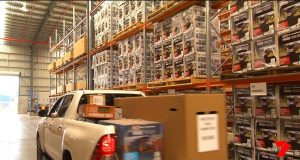If you’re someone who is looking to upgrade the tyres on your pride and joy, but all the jargon is all too difficult, don’t worry – you’re not alone. To make the process easier for you, we’ve put a definition to some of the tyre-speak so you can make an informed decision on your next set!
Tread
The tread is the part of the tyre that makes contact with the road. That is pretty self-explanatory, much like the tread or “grip” on your shoes. In the off-road market, you will hear people talking about how “aggressive” the tread patterns on tyres are. Depending on what sort of driving you will be doing, depends on how aggressive your tread pattern needs to be.
The perfect example of an aggressive tread pattern is a mud terrain tyre. They classically have deep grooves, and chunky rubber mouldings on their tread, so they can get as much grip as possible when trying to navigate soft, sticky mud. On the other hand, tyres like these tend to have more road noise than less-aggressive treads. So consider what you want to do with your four wheel drive before committing to a tread pattern.
Sidewall
The sidewall is the typically smooth, rubber on the side of the tyre that will hold all of the tyre’s information on it. This includes details such as the brand name and make, size of the tyre and recommended air pressure. Some four-wheel drive tyres will have reinforced sidewalls that protect the tyre from puncture when you’re off-road.
Carcass
The carcass of a tyre is basically how it is built. The internal construction of a tyre is made up with cords that basically hold the rubber together. The carcass is where the cord layer inside the tyre resides and holds the mould together. The carcass is also the part of the tyre that absorbs most of the shock and sustains the load put on the wheel.
Shoulders
The shoulders of a tyre are located right on the edge of the tread, where it meets the sidewall. This is often the spot where you can spot how worn your tyres are, of if they are underinflated. Some companies are also coming out with scalloped shoulders on their four wheel drive tyres, giving more grip in softer conditions, like snow or sand.
Written by Nick Biggs











